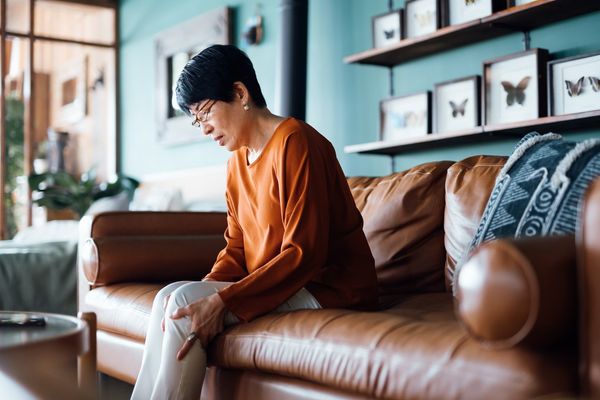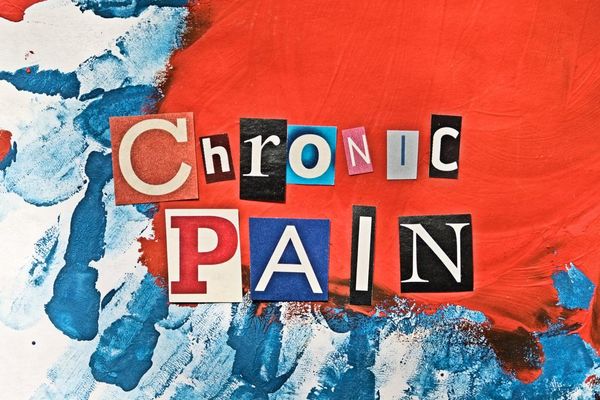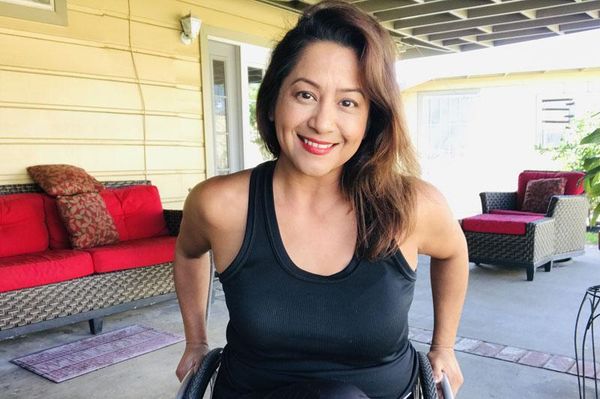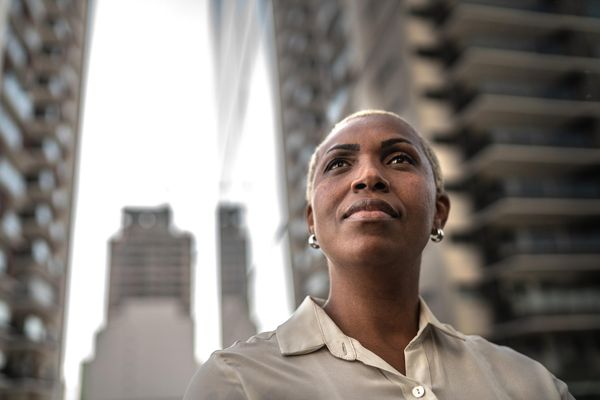More than 20 years ago, a heavy filing cabinet fell on Cindy Steinberg at her office and caused nerve and ligament damage to her back. The pain never went away. In the years after, she became an advocate for people who experience chronic pain and is currently the national director of policy & advocacy for the U.S. Pain Foundation.
In 2011, a landmark report titled "Relieving Pain in America: A Blueprint for Transforming Prevention, Care, Education, and Research," made the case for the National Institutes of Health (NIH) to define chronic pain as a brain and nervous system disease. However, the change has not been implemented, in part because awareness among other organizations and practitioners is still lacking.
"The problem is that [chronic pain being a disease] is not widely understood by the public or even (healthcare) providers because pain and advances in pain neuroscience [are] rarely if ever taught in medical school or other professional schools and the public is completely in the dark about this … until it happens to them or a loved one," Steinberg wrote in an email.
If chronic pain was better understood as a disease, those who live with chronic pain as well as those who research it would benefit immensely. The classification could unlock research funding as well as open the door to drug approvals, and help change attitudes in medical communities. Most important, for consumers, it could pave the way for chronic pain to be covered under health insurance.
According to Monica Mallampalli, Ph.D., senior advisor, scientific & strategic initiatives at HealthyWomen, classifying chronic pain as a disease could create a structure for how pain can be addressed. She emphasized the need for advocacy and education to make that happen.
"Advocacy can help Congress to mandate [chronic pain] as a disease and ask for funding to be allocated to study it as a disease," Mallampalli, who is also a member of HealthyWomen's Chronic Pain Advisory Council, wrote in an email. "If that happens, NIH will be asked to put a budget on how to address this."
"The problem is chronic pain is so complex and includes many diseases and conditions," she added. "I think it will take time and effort to break those silos."
What is chronic pain?
There are two types of pain: chronic and acute. Acute pain is usually the result of a specific cause — think broken bone or a burn — and goes away once that injury heals. Chronic pain lasts for longer than six months after an injury heals or an illness ends.
There's also high-impact chronic pain, which NIH defines as pain that has lasted at least three months and restricts someone's ability to work, go to school, or accomplish household tasks.
"It robs your life of any quality," said Steinberg, who cannot sit or stand for more than an hour at a time.
How many people have chronic pain?
Fifty million people in the U.S. — 1 in 5 Americans — live with chronic pain, according to a 2018 study from the Centers for Disease Control and Prevention (CDC).
Additionally, of the nearly 50 million Americans with chronic pain, about 20 million have high-impact chronic pain, and 11.3 million of those are women, according to the CDC.
How is chronic pain treated?
"The historical view of chronic pain and pain in general has been that pain is a symptom of some other derangement in the body, and the pain is important only in that it's a signal of something else that is wrong," said Dr. Roger Fillingim, a professor at the University of Florida who has spent more than 25 years researching chronic pain.
Under the traditional mindset, healthcare providers (HCPs) would then follow a basic biomedical method: Find the source of the pain, treat it, and the pain goes away.
"Frankly that would be just fine if that perspective worked, but for the tens of millions who currently have high-impact pain and have sought many treatments to try to get rid of whatever the derangement that physicians think is causing it, that approach to chronic pain hasn't been very effective," Fillingim said.
When part of your body suffers harm, it sends signals to your brain — known as neurotransmitters — that cause you to feel pain. But with some forms of chronic pain, those neurotransmitters don't turn off, causing a type of feedback loop where the pain continues even though the initial injury has already healed.
"Increasingly, it's clear that the brain seems to change significantly in people with chronic pain," Fillingim said. "Regardless of where pain starts, it's only pain if it's in the nervous system. No brain, no pain."
Instead, researchers including Fillingim are studying how to treat the nervous system and how it processes pain. Rather than searching for a source outside the brain, they're focusing on the brain itself.
How does chronic pain affect women in particular?
Numerous studies have shown that HCPs are less likely to take women's pain seriously, especially when it comes to chronic pain, than they are for men. Antidepressants may be prescribed to treat chronic pain, and women are more likely to end up with a referral to a mental health provider than have their pain taken seriously.
This is where it gets complicated because chronic pain is a risk factor for people to develop anxiety and depression, and vice versa. As a result, medical providers may dismiss patients' pain as part of their mental health disorder.
"The concern is that people with chronic pain conditions will have their pain minimized and perceived as just another symptom of their psychological condition," Fillingam said.
How can classifying chronic pain as a disease help chronic pain sufferers?
Recognizing chronic pain as a disease would be a game changer in terms of how insurance companies address treatment options. A 2017 review of state-based health insurance plans found that the majority did not cover nonpharmaceutical treatment options for people with chronic low back pain, for example.
"Acknowledging the burden of pain and how this disease has affected so many millions of people should lead to pressure on insurers to approve coverage for more treatment," Steinberg said.
Martha Nolan, senior policy advisor at HealthyWomen, said getting the condition classified as a disease is a concept that has value because insurers pay medical bills based on CPT codes for disease evaluation, diagnosis and treatment submitted by providers. This can give insurers control over which treatment doctors can give a patient so that they will be reimbursed and not have to pay out of pocket for costly care that they may not be able to afford otherwise.
"While I think this is changing slightly, it is more likely HCPs have figured out ways to bill," Nolan wrote in an email. "With the bias toward treating something recognized as a disease as opposed to something unidentifiable or harder to classify, making the change could help with coverage as well as people with chronic pain not being dismissed by doctors."
By increasing chronic pain research and training, experts hope that HCPs will be better informed when speaking to patients about their pain and that if HCPs understand that this is disease like any other disease, patients will in turn receive better treatment.
- Learn More About Chronic Pain ›
- Like Millions of Women, I Live With Chronic Pain — and I’ve Had to Learn to Advocate for Myself ›
- Chronic Pain for Women Is Real ›
- Fast Facts: 10 Things to Know About Women and Chronic Pain - HealthyWomen ›
- For Millions of Americans Enduring Chronic Pain, Support Is Overdue - HealthyWomen ›
- HealthyWomen's Chronic Pain Summit - HealthyWomen ›
- How Chronic Pain Changes the Brain - HealthyWomen ›







